Wondering where all your American Goldfinches have gone? You're not the only one. Right now I have a about 5-6 goldfinches on my feeders at a time (mostly males), a far cry from my regular flock of 20-30 and winter flocks of 120-130 finches. So what gives? It's not you, it's them. No really it is. There are 2 main reasons goldfinches seemly abandon feeders from late July through to the mid/end of September:
- Nesting
- Natural Food Sources
As mentioned in my previous post (Nesting Goldfinches) right now goldfinches are incubating eggs. How can I tell? One of the first clues is the lack of females at my bird feeders. After watching the females collecting nesting material to build their nests, they have all but disappeared completely from my feeders. The males are still feeding away, but females are few and far between. Only making brief appearances for a snack at the feeder when the male trades places with her on the nest. When the females do show up many have had visible brood patches. A brood patch is a section of featherless skin that is sometimes visible on the underside of birds during the nesting season, especially when feathers are matted down. This patch
of skin is well supplied with blood vessels at the surface making it
possible for the birds to transfer heat to their eggs when incubating. When just one parent incubates, it along develops a brood patch. If both parents incubate, both may develop brood patches. Brood patches are a clear indication that a bird is incubating eggs or keeping young hatchlings warm. Here are a couple of photos I managed to take of female goldfinches with brood patches a couple recently (last week) and one from last summer. When the parents can leave the nest for longer periods of time in search of food, they will return to feeders more often; but you still may notice a drop off of activity ...Which brings me to my second point, there is a lot of natural food right now.
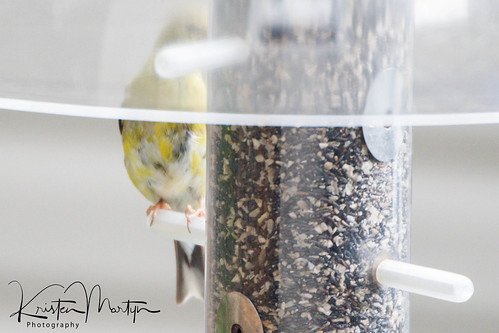 |
| Female Goldfinch with Brood Patch Feeding on WBU Finch Blend |
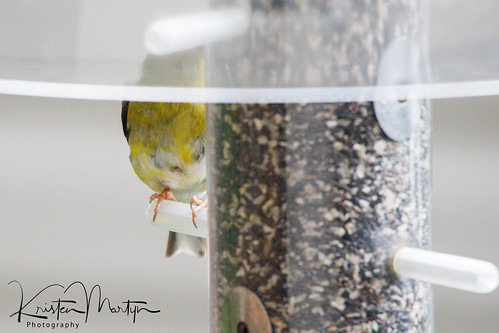 |
| Female Goldfinch with Brood Patch Feeding on WBU Finch Blend |
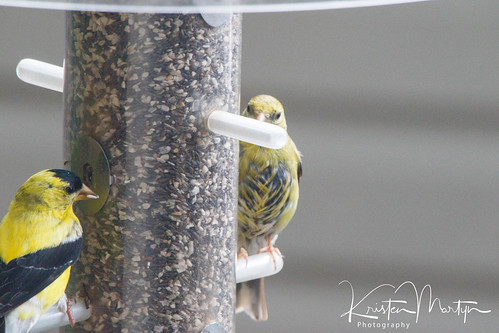 |
| Female Goldfinch (right) with Brood Patch Feeding on WBU Finch Blend |
Natural Food Sources
I've been biking the hiking trails in my neighbourhood quite a bit lately and without fail when I pass by any kind of meadow habitat I end up flushing all of the goldfinches feeding on thistle plants. Thistle is everywhere right now and the goldfinches are feeding heavily on this food source. Thistles are one of the goldfinches favourite foods, along with Black-eyed Susan, coneflowers and goldenrods. They adore these late summer bloomers so much that they time the arrival of their young ones with these plants going to seed after flowering. Because Mother Nature has provided them with a bounty of food they don't visit feeders as much during the late summer. The good news is they will return once the seed crops have been depleted. While they are eating native thistle seeds they don't typically eat as much Nyjer seed; however they will still come to feeders for black-oil sunflower and in particular sunflower chips. So, now is a great time to offer sunflower chips or WBU Finch Blend (a combination of Nyjer and fine sunflower chips) to keep the goldfinches interested in your offerings.
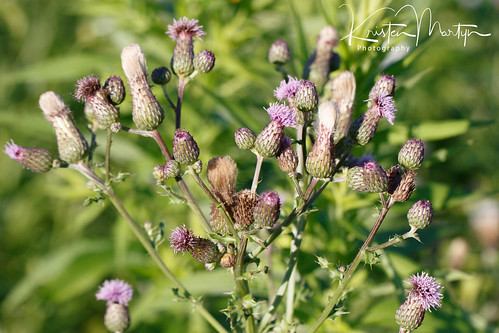 |
| Thistle Plant in Flower |
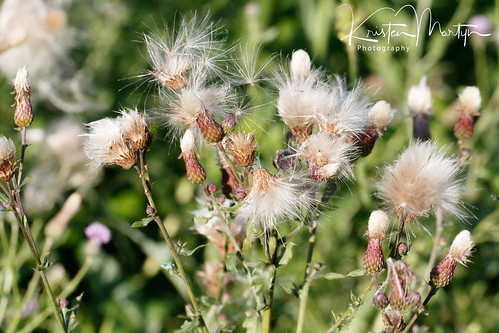 |
| Thistle in Seed |
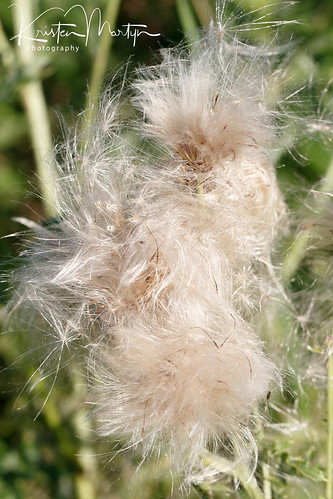 |
| Thistle Seed Heads |
If you feel like your finches have abandoned you, they haven't they are just a little busy raising a family and enjoying some of their favourite foods... and who can blame them?! When the young ones fledge, I do find they visit feeders a little more often and will often feed their fledglings right there on the feeders. Soon it will be a great time to observe goldfinch families so keep your feeders full of fresh food. I hope you enjoy watching them as much as I do!
Good birding,
~Kristen

















No comments:
Post a Comment